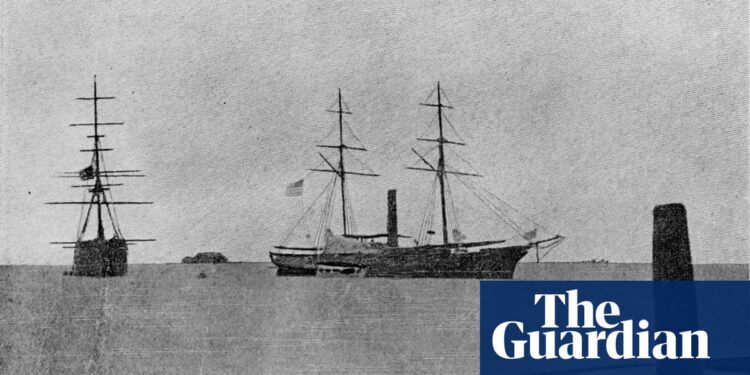In a ceremony Saturday afternoon, the US navy apologized for firing upon and torching the Alaska Native village of Kake in 1869.
Surrounded by tribal Chilkat weavings, historic photographs and other Lingít artwork in the Kake elementary and high school gymnasium, R Adm Mark B Sucato expressed the military’s regret, in the first of two apologies planned by the military for bombardments of Alaska Native communities in the late 1800s.
“This has been 155 years in the making,” said Joel Jackson, the president of the Organized Village of Kake, of the apology to the Lingít (often known as the Tlingit) people. “It’s becoming real because we never talked about it and now we are.”
The event also included remarks from other tribal leaders and elders, a blessing from the tribe and a navy chaplain, and performances by the local Native Ḵéex’ Ḵwáan Dancers and the navy band..
A second ceremony is planned for 26 October, the 142nd anniversary of the navy’s 1882 bombardment of the nearby village of Angoon.
The bombardments of Kake and Angoon occurred just a few years after the United States bought the territory of Alaska from Russia in 1867. During those early years, the US army and navy patrolled the region, including from a fort in Sitka where, in 1869, a sentry killed two Lingít men. To settle the ensuing dispute, an army general dispatched the USS Saginaw, a warship, to Kake to “seize a few of their chiefs as hostages till [the accused] are given up” and to “burn their villages”.
“They burned everything. All the shelters, all the food caches, the canoes,” Jackson told the Washington Post. Although no one was killed during the winter bombardment, he said the destruction of the community and its supplies and canoes led to many deaths.
Thirteen years later, the military bombarded a second village after another dispute – this time over the death of a Lingít medicine man. Although the elder’s death onboard a whaling ship was an accident, the tribe sought customary recompense of 200 blankets. Edgar Merriman, the naval commander of the department of Alaska at the time, denied the request and instead demanded 400 blankets from the tribe. When the Lingít only partly fulfilled the request, Merriman ordered US forces to bomb the settlement in Angoon.
Federal officials would later praise Merriman for the assault. “As long as the native tribes … do not feel the force of the government and are not punished for flagrant outrages, so much the more dangerous do they become,” William Morris, the region’s federal revenue collector, wrote in one letter in 1882.
Today, the US military recently deployed to a remote island in response to a spike in nearby Russian military activity.
The navy’s apologies this fall “will mean a lot”, said Garfield George, who as house master of Deishú Hít, or End of the Trail House, in Angoon is known as Kaaxooutch. He will help lead the ceremony there in October. Although the community of Angoon received a $90,000 settlement from the Department of the Interior in 1973, it has long sought a formal apology.
Jackson hopes the navy’s apology Saturday in Kake will encourage further healing of the intergenerational trauma caused by military violence. “A lot of our people don’t even talk about it. We need to start talking about it, because we need to start healing,” he said.







